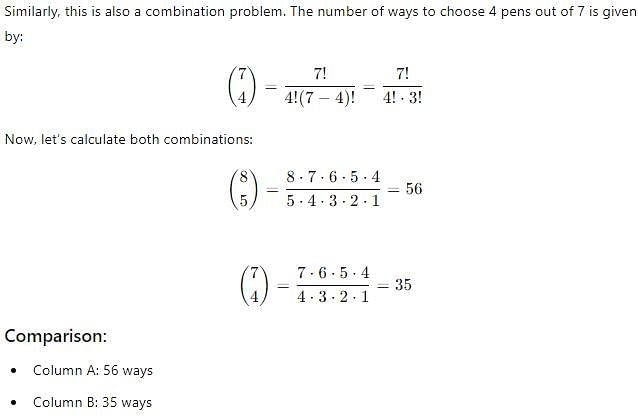GRE Exam > GRE Tests > Section-wise Tests for GRE > Test: Quantitative Comparison- 1 - GRE MCQ
Test: Quantitative Comparison- 1 - GRE MCQ
Test Description
15 Questions MCQ Test Section-wise Tests for GRE - Test: Quantitative Comparison- 1
Test: Quantitative Comparison- 1 for GRE 2024 is part of Section-wise Tests for GRE preparation. The Test: Quantitative Comparison- 1 questions and answers have been
prepared according to the GRE exam syllabus.The Test: Quantitative Comparison- 1 MCQs are made for GRE 2024 Exam. Find important
definitions, questions, notes, meanings, examples, exercises, MCQs and online tests for Test: Quantitative Comparison- 1 below.
Solutions of Test: Quantitative Comparison- 1 questions in English are available as part of our Section-wise Tests for GRE for GRE & Test: Quantitative Comparison- 1 solutions in
Hindi for Section-wise Tests for GRE course. Download more important topics, notes, lectures and mock
test series for GRE Exam by signing up for free. Attempt Test: Quantitative Comparison- 1 | 15 questions in 30 minutes | Mock test for GRE preparation | Free important questions MCQ to study Section-wise Tests for GRE for GRE Exam | Download free PDF with solutions
Detailed Solution for Test: Quantitative Comparison- 1 - Question 1
Detailed Solution for Test: Quantitative Comparison- 1 - Question 2
| 1 Crore+ students have signed up on EduRev. Have you? Download the App |
Detailed Solution for Test: Quantitative Comparison- 1 - Question 3
Detailed Solution for Test: Quantitative Comparison- 1 - Question 4
Detailed Solution for Test: Quantitative Comparison- 1 - Question 5
Detailed Solution for Test: Quantitative Comparison- 1 - Question 6
Detailed Solution for Test: Quantitative Comparison- 1 - Question 7
Detailed Solution for Test: Quantitative Comparison- 1 - Question 8
Detailed Solution for Test: Quantitative Comparison- 1 - Question 9
Detailed Solution for Test: Quantitative Comparison- 1 - Question 10
Detailed Solution for Test: Quantitative Comparison- 1 - Question 11
Detailed Solution for Test: Quantitative Comparison- 1 - Question 12
Test: Quantitative Comparison- 1 - Question 13
N is the smallest positive integer that has 7 factors.

Detailed Solution for Test: Quantitative Comparison- 1 - Question 13
Detailed Solution for Test: Quantitative Comparison- 1 - Question 14
Detailed Solution for Test: Quantitative Comparison- 1 - Question 15
|
30 tests
|
Information about Test: Quantitative Comparison- 1 Page
In this test you can find the Exam questions for Test: Quantitative Comparison- 1 solved & explained in the simplest way possible.
Besides giving Questions and answers for Test: Quantitative Comparison- 1, EduRev gives you an ample number of Online tests for practice






























